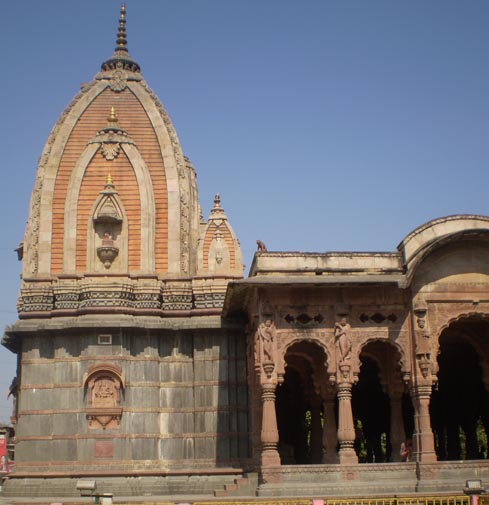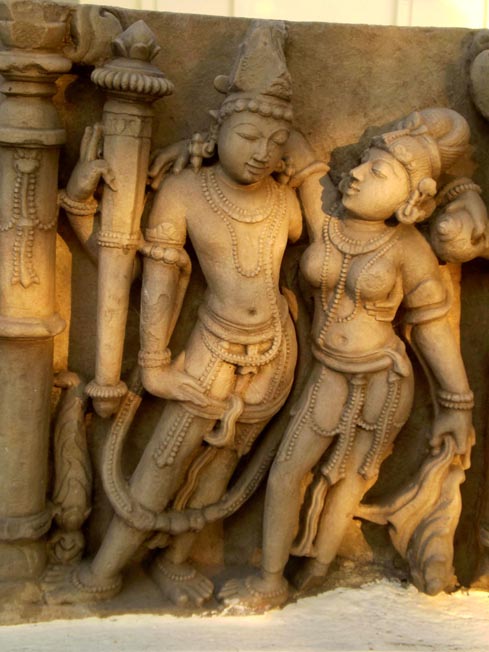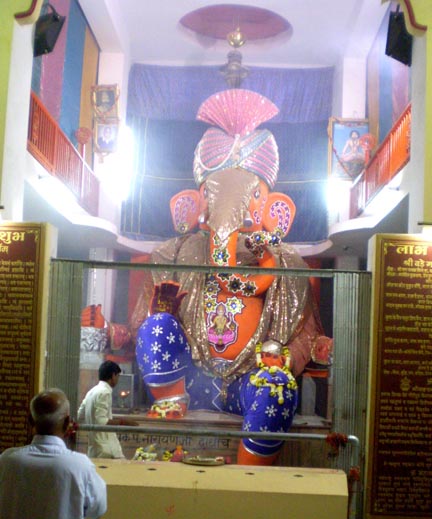Indore is the largest city in Madhya Pradesh, a fastest growing economic region. Together with its satellite towns of Pithampur and Dewas, Indore is considered the commercial capital of Madhya Pradesh. The major factor that has contributed to its economic growth is its proximity to the Gujarat-Mumbai grid. Indore is also one of the foremost education centres in Central India.
Indore was once the capital of the Holkars, of whom most significant and notable person in the history was Rani Ahilyabai Holkar. Indore or Indrashwar or Indrapur (from which the name Indore was derived) was originally bestowed to Malhar Rao Holkar, the father-in-law of Ahilyabai, by the Maratha Peshwa Bajirao as his Jagir. The Holkars had a very keen interest in city planning and education and Indore, as we see now, is the result of their planning and shaping. Today Indore is a perfect melange of the old and new, beautifully resplendent heritage structures co-existing with multi-storeyed ultra-modern buildings.
Historic Buildings in Indore
Rajwada - Rajwada means a palace and was built in 1749 by Malharrao Holkar to serve as his residence. The mammoth seven-storeyed palace is a pleasing combination of Maratha, Mughal and French architectural styles. It reaches out to the sky from the chaotic lanes of adjacent Khajuri bazaar in the heart of the old city. The palace has recently been renovated and we can see some evidence of the lifestyle of the Holkars. Behind the Rajawada, there is a beautiful structure that is dedicated as a temple to the Holkars' deity Malhari Martand. This portion houses some very beautiful statues of Ganpati, Shiva and Parvati etc. carved in black granite stone.
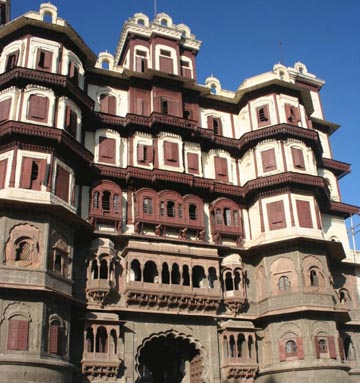
Krishnapura Chhatris and Chhatribaug - These places have beautiful Chhatris or Cenotaphs commemorating the Holkar kings and queens, built on the spot where they were cremated. These are located on the banks of the Khan river at Chhatripura and Krishnapura. The chhatris are perfect examples of the architectural skills of the Marathas. All the chhatris have spires and enshrine life-size statues of the Holkar rulers and their queens. The chhatris of the Krishnapura are dedicated to Maharani Krishnabai, and the father son duo - Tukoji Rao II and Shivaji Rao, respectively.
At Chhatribaug, the cenotaphs are dedicated to Bolia Sahib along with other chhatris. The area has been beautified with creation of an artifical lake, beautiful gardens and boating facility for the visitors.
Lalbaug Palace - Set amidst beautifully maintained gardens spread over nearly 72 acres in the southwest of the City is the Lalbag Palace, built
between 1886 and 1921. The palace was built by Maharaja Shivaji Rao Holkar under the supervision of Tukoji Rao Holkar II in 1886 and finished construction in 1921 under Tukoji Rao Holkar III. The magnificent gates of the palace is replica of the gates at the Buckingham Palace, London and were actually produced and shipped to India from England. The architecture is a blend of Renaissance, Palladian and Baroque elements and is home to grand chandeliers, rich Persian carpets, beautiful paintings, ceiling frescoes and stuffed gaming trophies. Although the furniture is all in very good shape with efforts taken to preserve the silver and gold gilding, the cushions, carpets, rugs, etc. are now discolored, frayed and in many places torn to pieces. Outside the palace, there are some very exquisitely maid mermaid sculptures in the ponds and fountains that now are no longer functioning and do not hold any water. The sculptures though are in very good condition. The palace truly reflects the fine aesthetic sensibility of the Holkars and was considered one of the most stylish residences in the whole country.
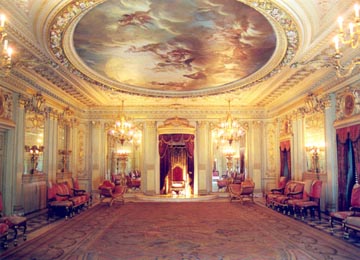
Central Museum - Also known as the Indore Museum, it is a huge and impressive building which holds a huge collection of artifacts excavated from Mohen-jo-Daro and an impressive collection of sculptures salvaged from Mandasaur, MP. The sculptures are mainly Hindu and Jain, from the Gupta and Parmara period dating back to 11th and 12th century. We were extremely delighted to see small structures ranging from Shiva and Parvati to Kubera, Lakshmi and Saraswati etc. Though small in size, they are carved with so much finesse that you can see the details of their ornaments and the fine features of the deities. The proportions are very accurately maintained in these statues. In some sculptures, the sheerness of the garment worn was so much alive that we were completely bowled over. One must spend a reasonable amount of time to enjoy the beauty of these fine relics of our rich history.
The Upper gallery of the museum has a fine collection of different kinds of weaponry and firearms.
Chidiyaghar - Kamla Nehru Zoological Park or Chidiyaghar, as it is commonly called, is situated right next to the Museum. It is home to a large number of animals from tigers, elephants to a variety of birds etc. A must visit place for a quiet time with your family.
Religious Places in Indore
Indore also has an eclectic mix of temples, mosques and churches. Close to the Lalbag Palace is Annapurna Mandir which has been inspired by the Meenakshi Temple of Madurai. Nearby is the dargah of Shahanshah-e-Malwa with a banyan tree that is said to be over 700 years old. There is also a very beautiful Kanch Mandir, close to Rajwada, built by a Jain Industrialist Seth Hukumchand in the early 20th century. The walls, ceilings, floors, doors, the paintings and murals here are all made of glass. The chandeliers adorning the ceiling are made of cut glass. On the top floor, a special glass chamber multiplies the images of three tirthankars, Adinath, Shantinath and Chandraprabha to an indefinite number. All three are made of shimmering black onyx.
Close to Kanch Mandir is the 19th century Bade Ganpatiji Ka Mandir. The Ganpati idol here, at over 8 meters from head to foot. is believed to be the largest in the world. The idol was made by a mixture of dhaniya (coriander) seeds, jaggery and mud from the stables of horses and elephants, believed to be sacred ingredients.
Khajrana Ganesh Mandir is another famous Ganesh Mandir in Indore built by Rani Ahilyabai Holkar and is deeply revered by the locals.
Gomatgiri is a set of Jain temples situated on the Gomateshwar Hill, with 24 temples for each of the 24 Jain Tirthankars. Main attraction of Gomatgirir is a huge 24-feet statue of Lord Bahubali.
Gandhi Hall - A stunning Town Hall in Indo-Saracenic style waqs inaugurated in 1905 and christened Gandhi Hall in 1848. It has a four-faced domed clock tower in front, for which the Hall is also called as Ghantaghar locally.
There are many beautiful churches clustered around the Residency area, notably Red Church, White Church and St. Anne's Church. St. Anne's Church is the oldest church in Central India and was built in 1858.
Eating Out In Indore
Indore is famous for a mind-boggling variety of namkeens and sweets. There are a large number of hotels serving Gujrati, Punjabi, Mughlai, South Indian, Chinese and Continental dishes. There are also many restaurants where you can try the typically Malwa dish Daal-Bafla here, a dish much similar to Rajasthani Daal-baati, but the flavours are unique to Malwa region.
Street food is very popular here in Indore and the best place to go is the world-famous Sarafa Bazaar, a jewellery market which turns into a Eat Street at night after 9' o clock. Sarafa Bazaar is located in heart of the city, in close proximity to the Rajwada. The dishes that you must eat are 'bhutte ka kis' made from sweet corn, gulab jamun, dahi-wada, 'garadu kand ki chaat', delicious, thick 'rabri', aloo tikiya, 'moong dal ka halwa', samosas, and a large variety of kachoris. To cool off, there are also various places to enjoy a variety of ice-creams and milk shakes. The best place to eat dahi-wada is the Joshi Dahi Wada. Once you eat dahi wada at this place, you willnever like another one, the taste is just so yummy.....a delightful combination of sweet, sour, and tangy tastes. Also, watching the owner prepare those plates of dahi wada is a treat for the eyes! Make sure you visit Sarafa Bazaar on an empty stomach and visit at least 2 days so that you are able to do justice to all that unbelievably delicious food!
Another frequented eating place is the Chhappan Chowpatty or Chhappan Dukaan which offers all of the aove variety of foods.
For breakfast options in Indore, visit any of the many places that sell steaming hot plates of poha, a typical Indore breakfast menu or a dish of fariyali sabudana kichadi for a change in taste.
Shopping in Indore
As I mentioned earlier, Indore is a large trading centre with close ties with Gujarat and Mumbai, offering everything that one needs to buy. Most of all internation shops and chain stores can be seen in Indore. Cloth industry of Indore is particularly famous and fabrics with hand block printing, zari work, batik and bandhani are famous. Maheshwari and Chanderi sarees are also very famous for their delicacy and exquisite designs. M.T. Cloth Market is ideal destination for buying wholesale clothing. Topkhana is famous for readymade garments and Sitlamata Bazaar sells retail clothing and sarees.
Jute industry is also a big industry in Indore and one can buy items made from jute such as lamps, baskets, hammocks, bags etc. made from jute.
Indore is also famous for its stuffed leather toys which are available in various forms and sizes.
For readymade salwar-kurtas, one needs to head to Kalpana Dresses near Chhappan Chowpatty, or Avni and Sanskar Dress Materials at RNT Marg.
For jewellery head to Bada and Chhota Sarafa Bazaar. While in Sarafa Bazaar, do not forget to buy the famous Indore ka Chiwda, a number of farsaans or mixtures, as they are called and the famous box of fresh, crisp, sweet 'gajak'.
Accomodation in Indore
There are a number of hotels ranging from luxurious accomodations to functional budget hotels. Most hotels are located on RNT Marg and South Tukoganj and one can choose from them depending on your budget, needs and facilities provided.
Places of Interest Near Indore
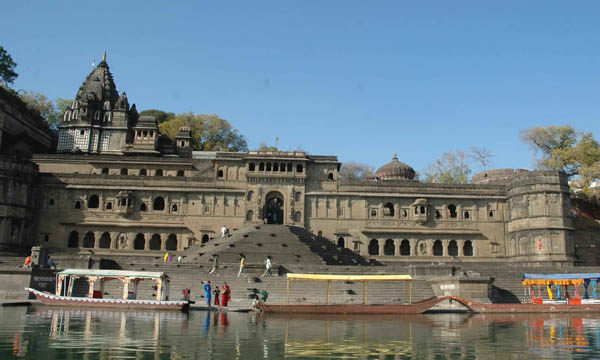
Omkareshwar - a holy town situated about 80 kilometres from Indore. Situated on the confluence of rivers Narmada and Kaveri, it is a very sacred site for Hindu pilgrims. There are beautiful ghats on the banks of the river which were built by Rani Ahilyabai Holkar. It is here that the devotees commence their Narmada Parikrama, a walking journey in which the river Narmada is circumambulated in her entire length of 1312 kilometres.
Ujjain -another city of religious importance is situated 56 kilometres from Indore. It has the famous Mahakaleshwar temple, enshrining one of the twelve jyotirlingas. Ujjain is also a venue for the kumbh melas that take place once in 12 years during the month of chaitra. Millions of devotees, throng the ghats of Ujjain to take a dip in the River Shipra.
Mandu - Or Mandavgarh is actually a hill fort situated at the altitude of 2000 feet in the Vindhyan mountain ranges. Mandavgarh is famous for its fort, a number of palaces of magnificent architecture, baths, pavilions, canals etc. The place is amazingly lush with plenty of greenery everywhere and is a hot destinaqtion for many to visit during the monsoons. The residents here are mainly the bhils and the gond tribals.
Maheshwar - It is located at a distance of 91 kilometres from Indore.Maheshwar was the capital of the Holkars before it was shifted to Indore in the 1818 by Malhar Rao Holkar. Maheshwar is mainly famous for a large number of temples, most notable ones are the Sahastrarjun temple, Rajrajeshwar Mandir, Kashi Vishwanath Mandir, Chintamani Ganpati Mandir, Kaleshwar, Baneshwar, Pandharinath, Narsingh etc. Ahilyabai built a splendid fort here in addition a number of beautiful buildings, temples and the splendid ghats. Maheshwar is home to traditionally hand-woven fine, Maheshwari sarees.
Patal Pani -A beautiful place on the way towards Mhow, its chief attraction is large waterfalls falling from a height of 300 feet. The depth at the bottom of the falls is not known and hence it is called as Patal pani. This place is best visited during the monsoon season.
How to Reach Indore
Indore is well connected with other major cities and has an extensive network of roadways and railways. Indore is situated at the confluence of two national highways, NH-3 connecting Agra to Mumbai and NH-59 connecting Ahmedabad to Indore. Indore also has regular bus services to major cities like Bhopal, Gwalior, Jaipur, Ahmedabad, Mumbai, Pune, Nasik, and Aurangabad.
By Air - Devi Ahilyabai International Airport in Indore has daily flights to the major cities in India. The airport is situated about 8 km from the city, the busiest airport in Madhya Pradesh. It also serves as the international cargo hub.
By Rail - Indore station is a major junction and is directly connected to the metro cities like Delhi, Mumbai, Kolkata, Chennai, Pune, Lucknow and Jaipur.
Best Time to Visit
The best time to visit Indore is during the months of October to March when the temperatures are a pleasant 10 degrees Celsius. The summer sees daytime temperatures soaring upto 45 degrees Celsius and hence are best avoided by the tourists.
